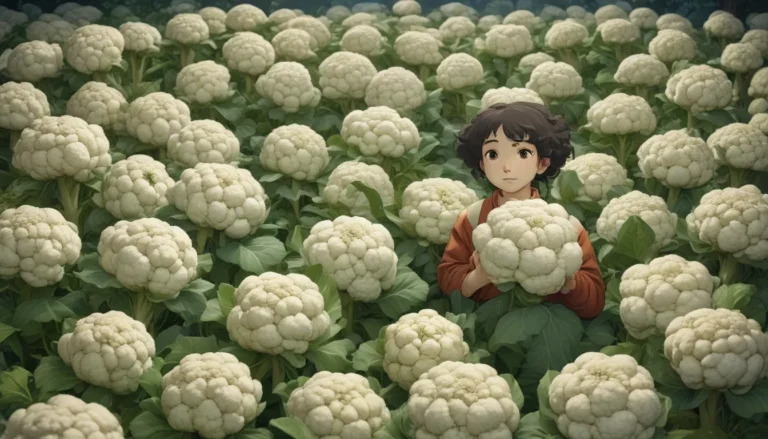The Complete Guide to Planting and Growing Sedum (Stonecrop)

Have you ever stumbled upon a garden filled with succulents and felt that magical “WOW” feeling? If so, you might be a fan of Sedum, commonly known as Stonecrop. Today, we are diving into the world of Stonecrop to learn how to plant and grow these versatile and beautiful plants.
What You’ll Learn
- Cultivation and History
- Propagation
- How to Grow
- Growing Tips
- Maintenance
- Species to Select
- Managing Pests and Disease
- Best Uses
- Quick Reference Growing Guide
Cultivation and History
Sedum plants thrive in USDA Hardiness Zones 3 to 10, depending on the species. Originating from temperate zones and tropical mountains across Asia, Europe, Northern Africa, and North America, Sedum’s name comes from its natural tendency to grow in rocky areas. The Latin term “sedeo” fittingly means “to sit,” referring to its sprawling nature.
With a history of unstable nomenclature, Sedum underwent changes in taxonomy, resulting in some inconsistencies. Some species of Stonecrop, like S. sarmentosum, have been used in Asian herbal medicine, while S. alfredii has unique properties for extracting heavy metals from polluted soil.
Propagation
When it comes to propagating Sedum, you have several options, including seeds, cuttings, division, or transplants. While growing from seed can be rewarding, non-seed methods provide a surefire way to secure the desired variety of Sedum.
-
From Seed: Sow Sedum seeds in well-draining soil in spring or summer.
-
From Cuttings: Take cuttings from healthy plants, allowing roots to develop in a growing medium.
-
Via Division: Divide mature plants into sections ensuring each one has roots for transplanting.
-
Via Transplanting: Transplant Sedums during early spring for optimal growth conditions.
How to Grow
Growing Sedum depends on the type and species you choose. Generally, Sedums flourish in lean, well-draining soil with full or partial sun exposure. With minimal water requirements and no need for fertilizer, Sedum is a hardy and versatile plant.
-
Climate: Sedums prefer warm and dry conditions and are tolerant of heat and drought.
-
Soil: Lean, well-draining soil is best for Sedums to avoid rotting and leggy growth.
-
Water and Fertilizer: Sedums only require water when the soil is dry and don’t need supplemental fertilizer.
Growing Tips
-
Direct sun is ideal for Sedums, but partial sun is acceptable for low-growing species.
-
Lean, well-drained, coarse soils are preferred for Sedum growth.
-
Avoid supplemental fertilizer and only water when the top two inches of soil is dry.
Maintenance
While Sedums are low-maintenance plants, a few tips can help keep them looking their best. Regular pinching of living flower heads can strengthen stems and keep plants tidy. Additionally, proper disposal of clippings and occasional pruning help maintain Sedum health.
Species to Select
With over 600 species, choosing the right Sedum can be overwhelming. Showy Stonecrop, Two-Row Stonecrop, and Orange Stonecrop are popular varieties with distinct features and growing requirements. Selecting the best Sedum for your garden depends on your preferences and growing conditions.
Managing Pests and Disease
While Sedums are generally robust, they can fall prey to herbivores, insects, and diseases. Regular monitoring and proper care can prevent common issues such as black vine weevil, mealybugs, and powdery mildew. Implementing control measures like protective netting or organic sprays can help manage pests and diseases effectively.
Best Uses
Sedum’s versatility makes it suitable for a variety of ornamental planting scenarios. Whether as a specimen plant, ground cover, or container plant, Sedum adds visual interest to gardens, borders, and rock gardens. Their durability against foot traffic also makes them ideal for green roofs or challenging garden areas.
Quick Reference Growing Guide
- Plant Type: Flowering, herbaceous succulents
- Native to: Asia, Europe, Northern Africa, North America
- Hardiness (USDA Zone): 3-10, depending on species
- Bloom Time: Summer, fall
- Exposure: Full sun, partial sun
- Spacing: 6-24 inches
- Height: 3-24 inches
- Spread: 2-3 feet
- Water Needs: Low to moderate
- Common Pests and Diseases: Black vine weevil, mealybugs, rodents, scale, slugs/snails, etc.
- Uses: Borders, containers, ground covers, green roofs, etc.
With a vast array of species and cultivars to choose from, Sedum offers endless possibilities for creative gardeners. Whether you’re a beginner or a seasoned plant enthusiast, growing Sedum can be a rewarding experience. So, get your hands dirty and start planting some Stonecrop in your garden today!
If you have any questions or insights, feel free to share them in the comments below. Let’s keep the conversation growing!
For more information on succulents and gardening tips, check out these articles:
– How to Grow and Care for Succulents
– Propagating Succulents in 5 Easy Steps
– 11 Best Easy-Care Exotic Succulents to Grow at Home
Remember, the key to successful gardening is experimentation and observation. So, don’t be afraid to try new things and see what works best for your Sedum plants. Happy planting!





